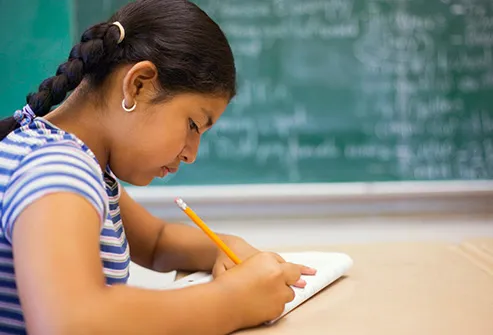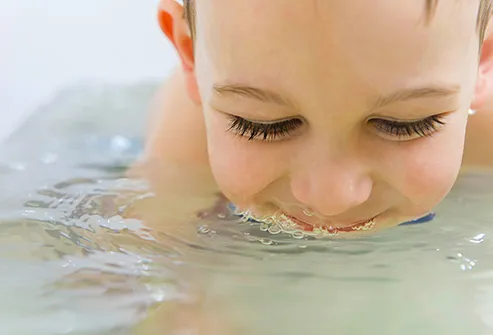Η αγαπημένη συνήθεια των παιδιών
Ζούμε
αναμφισβήτητα στην εποχή της εικόνας. Τηλεόραση, ηλεκτρονικός
υπολογιστής, βιντεοπαιχνίδια είναι πια αναπόσπαστο κομμάτι της ζωής μας,
ειδικότερα των παιδιών. Όμως, όπως με κάθε συνήθεια, η υπερβολή στη
χρήση των μέσων αυτών, έχει συνδεθεί με αρνητικές επιδράσεις σε
διάφορους τομείς, μεταξύ των οποίων και οι συνήθειες διατροφής και
σωματικής δραστηριότητας. Η επιστημονική κοινότητα διερευνά τις σχέσεις
αυτές σε πολλά επίπεδα, και προτείνει την ύπαρξη ανώτατων επιτρεπτών
ορίων για την τηλεθέαση και συνολικότερα για τη λεγόμενη ενασχόληση με
την οθόνη.
Ειδικότερα
η τηλεόραση έχει γίνει πολλές φορές αντικείμενο τέτοιας μελέτης και σε
γενικές γραμμές, φαίνεται ότι όσο περισσότερο χρόνο περνούν τα παιδιά
μπροστά στην τηλεόραση τόσο περισσότερες πιθανότητες έχουν να γίνουν
υπέρβαρα. Η σχέση αυτή φαίνεται να εμφανίζεται ήδη από τις 2 ώρες την
ημέρα. Από ποιες οδούς, όμως, περνά αυτή η σχέση; Καταρχάς, η τηλεθέαση
είναι ανταγωνιστική της σωματικής δραστηριότητας, εφόσον είναι καθιστική
δραστηριότητα. Ο τηλεθεατής παραμένει καθηλωμένος σε μια πολυθρόνα,
χωρίς να κινείται, περιορίζοντας σημαντικά τη φυσική του δραστηριότητα.
Συνεπώς, όσο περισσότερο χρόνο περνά το παιδί βλέποντας τηλεόραση, τόσο
λιγότερο χρόνο έχει διαθέσιμο για άλλες ενασχολήσεις. Βέβαια, δεν
σημαίνει ότι κι αν ακόμα ένα παιδί έφτανε σε μηδενική τηλεθέαση, όλο το
χρόνο που πριν έβλεπε τηλεόραση θα τον αφιέρωνε πια σε αύξηση
της σωματικής δραστηριότητας. Όντως, έχει φανεί ότι μειώνοντας το χρόνο
τηλεθέασης, ένα μέρος αυτού αφιερώνεται μεν σε άλλες καθιστικές
δραστηριότητες (πχ διάβασμα, μουσική), αλλά ένα άλλο σημαντικό μέρος
αφιερώνεται σε αύξηση της σωματικής δραστηριότητας. Επιπλέον, με την
υπερβολική τηλεθέαση ο ελεύθερος χρόνος των παιδιών αφιερώνεται σε μια
μη δημιουργική δραστηριότητα. Σώμα και μυαλό αδρανούν, οι «καύσεις» του
οργανισμού περιορίζονται σημαντικά, όπως και η επαφή και η επικοινωνία
ανάμεσα στα μέλη της οικογένειας.
Η
τηλεόραση, όμως, δεν «παχαίνει» μόνο εξαιτίας της σωματικής αδράνειας,
αλλά και μέσω αλλαγής των διατροφικών συνηθειών. Σε αυτό το σημείο, οι
διαφημίσεις τροφίμων παίζουν καίριο ρόλο. Από μελέτες που έχουν γίνει ως
προς το είδος και τα χαρακτηριστικά των διαφημίσεων στην παιδική ζώνη,
φαίνεται ότι η πλειονότητα των τροφίμων που διαφημίζονται είναι χαμηλής
θρεπτικής αξίας, κυρίως υψηλής περιεκτικότητας σε ζάχαρη και λίπος. Στα
διαφημιστικά διαλείμματα των παιδικών εκπομπών παρελαύνει από τις οθόνες
σύσσωμη η βιομηχανία πρόχειρου φαγητού και σνακ – γαριδάκια, πατατάκια,
σοκολάτες, αναψυκτικά, παγωτά και μπισκότα καλούν τα παιδιά να τα
δοκιμάσουν. Και χρησιμοποιούν ιδιαιτέρως ελκυστικούς τρόπους για τα
παιδιά, όπως χαρακτήρες κινουμένων σχεδίων, την προσφορά δώρων,
ισχυρισμούς ότι το τρόφιμο θα αλλάξει τη διάθεση ή θα ενισχύσει τη
μυϊκή δύναμη, αναφορά ότι το προϊόν είναι ιδιαιτέρως νόστιμο και
γευστικό. Με τους τρόπους αυτούς, αποτυπώνονται τα προϊόντα στη μνήμη
των παιδιών και τα παιδιά αυξάνουν τη ζήτησή τους από τους γονείς τους. Η
βιομηχανία δηλαδή των τροφίμων επενδύει υπέρογκα χρηματικά ποσά, για να
απευθυνθεί μέσω των μικρών και περισσότερο ευάλωτων τηλεθεατών στην
αγοραστική δύναμη της οικογένειας.
 Επίσης,
η τηλεθεάση συνδέεται με την ταυτόχρονη κατανάλωση τροφίμων, τα οποία
έχει διαπιστωθεί ότι είναι χαμηλής θρεπτικής αξίας. Και όσο περισσότερες
ώρες περνά κανείς μπροστά στην τηλεόραση, τόσο μεγαλύτερη η πιθανότητα
να υπερκαταναλώσει τροφή. Η συνήθεια της ταυτόχρονης κατανάλωσης τροφής
με την τηλεθέαση είναι τόσο ισχυρή, που μάλλον δεν διανοείται κανείς να
δει τηλεόραση χωρίς να τσιμπολογήσει.
Επίσης,
η τηλεθεάση συνδέεται με την ταυτόχρονη κατανάλωση τροφίμων, τα οποία
έχει διαπιστωθεί ότι είναι χαμηλής θρεπτικής αξίας. Και όσο περισσότερες
ώρες περνά κανείς μπροστά στην τηλεόραση, τόσο μεγαλύτερη η πιθανότητα
να υπερκαταναλώσει τροφή. Η συνήθεια της ταυτόχρονης κατανάλωσης τροφής
με την τηλεθέαση είναι τόσο ισχυρή, που μάλλον δεν διανοείται κανείς να
δει τηλεόραση χωρίς να τσιμπολογήσει.
Τον
τελευταίο καιρό μελετάται άλλη μια επίδραση της τηλεθέασης και της
ενασχόλησης με τα τεχνολογικά μέσα, η οποία αφορά τον ύπνο. Στις μέρες
μας η ανεξέλεγκτη ενασχόληση με την τεχνολογία, ειδικά μέχρι αργά το
βράδυ, επηρεάζει και την ποσότητα και την ποιότητα του ύπνου των
παιδιών. Έτσι, οδηγεί όχι μόνο στην υπερκατανάλωση τροφής, αλλά και στη
μείωση της φυσικής τους δραστηριότητας την επόμενη ημέρα, επιδράσεις που
συνδέονται σωρευτικά με την αύξηση του βάρους.
Τι μπορείτε να κάνετε ως γονείς;
Ο
έλεγχος των ωρών τηλεθέασης ίσως φαντάζει ακόμα δυσκολότερος για
τους γονείς σε περιόδους οικονομικής ύφεσης, όταν για πολλούς η
τηλεόραση μπορεί να αποτελεί μια εύκολη και οικονομική λύση για την
ψυχαγωγία των παιδιών τους. Όμως, όπως και σε άλλους τομείς
αναδεικνύεται τώρα εντονότερα και εκτιμάται ο ρόλος της ποιότητας στη
ζωή, αντιστοίχως ισχύει και για τον ελεύθερο χρόνο των παιδιών. Οι
εναλλακτικές λύσεις βεβαίως προϋποθέτουν τη θέληση για αλλαγή και τη
συνεργασία μεταξύ των μελών της οικογένειας. Kαταρχάς, ως
γονείς/κηδεμόνες μπορείτε να θέσετε όρια στις ώρες που το παιδί σας
περνά μπροστά στην τηλεόραση. Σημαντικό είναι, όμως, όταν «διώχνετε» το
παιδί από την τηλεόραση, να μην συνεχίζετε οι ίδιοι το ζάπινγκ, και να
ενισχύετε εναλλακτικές δραστηριότητες. Ό,τι καλύτερο είναι να δώσετε το
παράδειγμα, βγαίνοντας έξω και παίζοντας μαζί με τα παιδιά σας ή
κάνοντας έναν οικογενειακό περίπατο. Ακόμα και όταν ο καιρός δεν
επιτρέπει τις εξωτερικές δραστηριότητες, η τηλεόραση δεν πρέπει να είναι
η μοναδική σας ψυχαγωγική δραστηριότητα. Μπορείτε να βάλετε μουσική και
να χορέψετε με τα παιδιά σας, να κάνετε μια επίσκεψη στο μουσείο ή να
πάτε για μπόουλινγκ. Συζητείστε με τα παιδιά σας και διαπραγματευτείτε
μαζί τους το χρόνο τηλεθέασης, θέτοντας μικρούς και ρεαλιστικούς
στόχους. Έχετε κατά νου ότι 1 με 2 ώρες παρακολούθηση τηλεόρασης
ημερησίως θεωρούνται αποδεκτές. Ενθαρρύνοντας, ωστόσο, τη συμμετοχή των
παιδιών σας στο αγαπημένο τους σπορ και τις αθλητικές δραστηριότητες του
σχολείου, δεν θα τους αφήσει περιθώριο για περισσότερες ώρες
τηλεθέασης.
Όσον
αφορά τον βομβαρδισμό των τηλεοπτικών διαφημίσεων, μπορείτε να
επιλέξετε κανάλια χωρίς διαφημίσεις ή κάποια παιδική ταινία στο βίντεο.
Παρακολουθήστε τηλεόραση μαζί με τα παιδιά σας και συζητήστε την έντονη
επιθυμία τους για κάποιο σνακ που τους προκαλεί η τηλεόραση. Εξηγείστε
τους το στόχο των διαφημίσεων και τα μέσα που χρησιμοποιούν,
προσπαθώντας να εκπαιδεύσετε σκεπτόμενους τηλεθεατές. Μπορεί να σας
φαίνεται αυτονόητο ότι η διαφήμιση και το κανονικό πρόγραμμα της
τηλεόρασης είναι διαφορετικά, για ένα παιδί όμως αυτό δεν είναι ξεκάθαρο
πριν ίσως φτάσει ακόμα και 10 χρονών!
Μερικές χρήσιμες συμβουλές για να πετύχετε καλύτερο έλεγχο της τηλεθέασης από τα παιδιά σας είναι:
- Μην επιτρέπετε την τοποθέτηση τηλεόρασης στο δωμάτιο των παιδιών.
- Θέστε σε συνεργασία με το παιδί εβδομαδιαίο στόχο για τις ώρες τηλεθέασης, καθοδηγώντας το να επιλέξει τα πιο αγαπημένα του προγράμματα.
- Καθορίστε από κοινού και τις κυρώσεις σε περίπτωση αθέτησης του στόχου (προσοχή, οι κυρώσεις να ΜΗΝ σχετίζονται με το φαγητό!).
- Τοποθετήστε κάποιο όργανο γυμναστικής μπροστά από την τηλεόραση, ενθαρρύνοντας τον συνδυασμό άσκησης και ψυχαγωγίας ή ενημέρωσης.
- Προσπαθήστε να έχετε όσο το δυνατό λιγότερες ώρες ανοιχτή την τηλεόραση.
- Ρωτήστε τα παιδιά πώς αισθάνονται ύστερα από την παρακολούθηση τηλεοπτικών προγραμμάτων και αν διαπιστώσετε προβληματικές επιρροές, προσπαθήστε να τις διορθώσετε με συζήτηση και απομυθοποίηση.
- Ενθαρρύνετε τα παιδιά να παίζουν με φίλους αντί να παρακολουθούν τηλεόραση.
- Επαινέστε τα παιδιά για τις επιδόσεις τους στις κατασκευές, το χορό, τη μουσική, τη ζωοφιλία, το κολύμπι κλπ, και όχι για οτιδήποτε σχετικό με την τηλεόραση.
- Τέλος, κατά τη
διάρκεια της τηλεθέασης, μην έχετε διαθέσιμα σνακ στο χώρο και φροντίστε
να τηρείτε στην οικογένεια τους κανόνες ότι τρώμε μόνο στο τραπέζι και
δεν τρώμε βλέποντας παράλληλα τηλεόραση.
ΠΗΓΗ : EYZHN































